During my hostel years, back in 2014, I met this guy called Takashi. He used to live right across from my room. We met when one evening he came to our door wanting to find out how laundry works in the campus.
That small 2-seconds question resulted in an almost instant friendship as he sat down with us for more than an hour or so.
We came to know that he was in India for some exchange program to study Indians and our lifestyles and stuff. When we asked him about how life is in Japan, his answer was quiet strange – to us. He said, “It’s boring. Compared to this.“
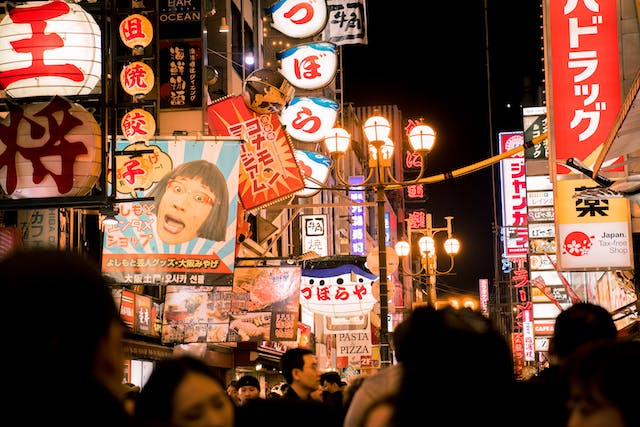
Having been grown up watching popular anime, trying (and failing) to learn origami, reading about different cities in the country, we couldn’t agree to him.
He also told us Japan is a country which is known for its respect, politeness and otherworldly pop culture, and it is indeed all that – but what’s missing is the sense of calmness, to cut off for a while from the robotic race of doing everything that everyone does – to relax, take a breath and just stop.. for a moment.
Yet, amidst all of that, amidst all of the diligent work ethic and bustling lifestyle, there remains a paradoxical fascination with Japan’s vibrant and pervasive culture.
And today, on this blog post, we discuss about that paradox and the curious dichotomy that has left many intrigued, prompting the question: Why is Japanese culture so popular?
Table of Contents
Why is Japanese Culture so Popular?
Japanese culture has spread out and captivated the minds of people around the world for a variety of reasons. Here are some of the major reasons that could help explain Why is Japanese Culture so Popular? –
Respect, Courtesy & Politeness
The country stands to be renowned as a symbol of respect, courtesy and politeness due to its people. Each interaction with Japanese people seems to tick-off the primary reason why is Japanese culture so popular.
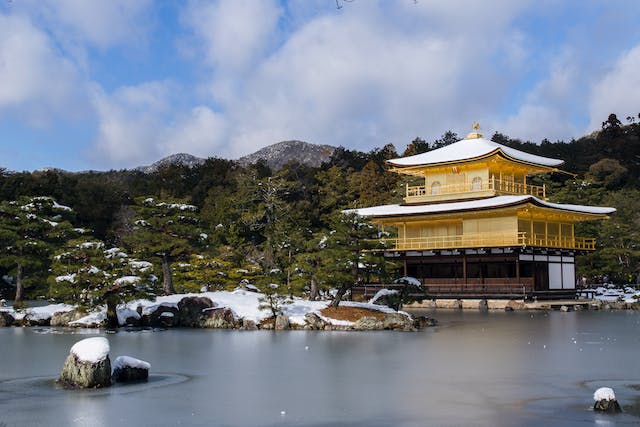
Right at the first meeting when they politely meet you, bowing and exchanging pleasantries, you are already captivated by the sense of calm that they provide you.
Bowing symbolizes humility, gratitude and acknowledgement to others and is a very common form or gesture of greeting in Japan.
There is this emphasis or importance given to etiquette and manners, not only in communication but also in actions. This is a thing which is deeply ingrained in the Japanese culture.
These values play a very important role in shaping social bonds, creating a sense of community and contributing to the overall harmony of society.
It is said that the Japanese must be the very best and most comfortable society to indulge with and make conversations with during a travel venture.
Traditional Arts & Crafts
Another really incredible reason why is Japanese culture so popular has to be the rich tradition of arts and crafts that comes from the country.
Fascinating crafts like calligraphy, flower arranging (or ikebana), origami and incredible tea ceremonies all are some of the finest things spread all over the world.

We have been learning about many Japanese arts and crafts since childhood and in all those, the intricate details and dedication to preserving these traditions are highly admired.
Some of the notable traditional arts and crafts include:
- Origami: The art of paper folding, origami, involved creating intricate and often fascinating sculptures using a single sheet of paper, without cutting or gluing.
- Ikebana: The disciplined art of Japanese floral arrangement, Ikebana emphasizes harmony, balance and simplicity by arranging flowers and other natural elements to create stunning yet minimalist displays.
- Ukiyo-e: A traditional woodblock prints that depict scenes from Japanese daily life, nature and folklore. These prints are created through a meticulous process of carving and painting.
- Sadō or Chadō: The Japanese tea ceremony is a ritualistic practice which is centered around the prep, serving and consumption of matcha (a powdered green tea).
- Swordsmithing: The crafting of Katana, the revered symbol of the Samurai, holds a very deep cultural significance for the people. The process includes: metallurgy, artistry and spiritual significance.
- UNAGI: As per Ross, Unagi is a state of total awareness. (Everybody here must have watched F.R.I.E.N.D.S right?)
Japanese pop culture influence
Ah, the award to the most popular global recognition that any country’s pop culture has ever received has to go to Japan! That is what makes for another great reason why is Japanese culture so popular.
We have all grown up watching Japanese anime in the form of Pokémon, Beyblade, Naruto, DBZ, Dorémon, Shinchan and whatnot. These programs almost instantly became a huge part of our childhood, isn’t it?
Want more nostalgia? Listen to this:

I mean who hasn’t collected those playing cards with silver and gold and diamond ones, made an entire book of collectibles, played those amazing video games, related to Nobita so much more, had fun having play battles of Beyblade with friends and just so many memories that keep coming as I write this all down.
Japanese pop culture, to me and many more, is beyond anything that they were primary made to be. It is nostalgia, our childhood, our memories, our friendly discussions and so much more.
Here are some key elements of Japanese pop culture and their impact:
- Anime & Manga: Anime refers to animated tv shows and films, while mange is like the Japanese counterpart to comic books and graphic novels. Their diverse genres & storytelling have attracted a devoted fanbase globally.
- J-pop & J-rock: The catchy tunes, unique performances and talented artists have all contributed to the global music scene as the Japanese pop and rock music has gained international recognition.
- Video Games: Japan is undoubtedly a powerhouse in the video game industry, known for iconic games like DMC, Super Mario, Metal Gear, Resident Evil and so many other popular names.
- Cosplay: Many comic-cons are filled with people dressing up as characters from their favorite video games, manga or anime. It is a prominent feature showcasing the creativity and dedication of fans.
Aesthetic Beauty
When you see the Japanese gardens, architectures and other interesting concepts attached with the Japanese culture, you understand that it places a strong emphasis on aesthetics.
Unlike many other countries and cultures, the traditions in Japan appreciates imperfections as a part of beauty.
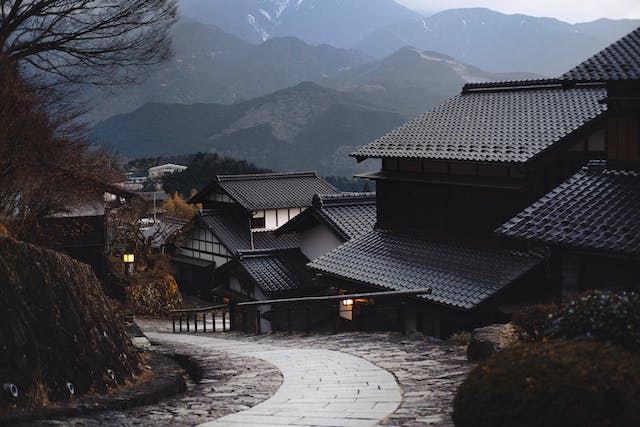
When you happen to see the Japanese structures and gardens in any other country as well, you just know why is Japanese culture so popular.
Deeply engraved in various aspects of daily life, art and traditions of the Japanese, the Aesthetic beauty is characterized by a profound sense and appreciation of simplicity, elegance and attention to detail.
Here are some elements that contribute to the aesthetic beauty within Japanese culture:
- Wabi-Sabi: Wabi Sabi is a concept that embraces the beauty of imperfection, transience and impermanence. It tends to find beauty in modest, aged, weathered or incomplete things, accepting the natural cycle of growth and decay – in the most beautiful manner.
- Zen Gardens: Also known as Karesansui, these are flawless designed spaces with carefully arranged rocks, gravel and minimal vegetation. The Zen Gardens evoke a sense of simplicity and tranquility amidst the nature.
- Traditional Architecture: From the Japanese temples to tea houses, the traditional style of architecture in the culture is exemplified by wooden structures having sliding doors, tatami mats and elegant minimalism.
- Kimono: A traditional Japanese garment, the Kimono is known for its intricate designs and beautiful fabrics. It’s patterns & colors often reflect seasons, nature and cultural motifs.
- Artistic Minimalism: Japanese art like ukiyo-e, etc. often portrays a serene landscape, nature and everyday lifestyle of people with a minimalistic approach which easily seems to capture the essence rather than intricate details.
Traditional Japanese Cuisine
The Japanese cuisine is world-renowned for its delicious flavors and fascinating presentation. The attention to detail and balance of flavors seen in any kind of Japanese food is unlike any other cuisine across the globe.

Arguably, the most popular food item in Japan which is incredibly famous throughout the world thanks to Naruto and its influence along with the high-quality and beautiful picturization of it in several anime, is the Ramen Noodles.
It is basically a very popular noodle soup dish which actually originates in China and has been adapted into the cuisine of Japan. It consists of wheat noodles served in a flavorful broth, mostly accompanied by toppings like sliced pork, green onions and seaweed.
Some other immensely popular Japanese cuisine which became a top reason why is Japanese culture so popular worldwide, include:
- Sushi: Vinegared rice combined with various ingredients like raw fish, seafood and other veggies.
- Sashimi: Thinly sliced, fresh raw fish or seafood, often served with soy sauce and wasabi.
- Kaiseki: A traditional Japanese multi-course meal showcasing a range of seasonal as well as regional dishes. It puts an emphasis on balance, taste and presentation.
- Wagashi: A traditional sweet of Japan often served during the tea ceremony. These are made typically, from mochi (rice cake), red bead paste and several fruits.
Zen Philosophy Influence
Zen Philosophy, originating from Zen Buddhism has significantly influenced various aspects of the Japanese culture. It is appreciated for its emphasis on simplicity, meditation and mindfulness.

The basic concept of Zen is intriguing to many seeking inner peace and self-discovery. The teachings and principles related to the Zen philosophy have transcended religious boundaries and left an indelible mark on many facets of Japanese life.
This ideology has found its way into several aspects of Japanese culture, influencing art, aesthetics and even the way people approach daily life.
As far as art is concerned, the Zen philosophy’s influence can be observed through minimalism, emphasizing on simplicity and the beauty of space. And the major arts and crafts of Japanese traditions have all been impacted in some way or another by this notion.
Here are a few key points regarding its influence:
- Being present in the moment.
- Encouraging simplicity & minimalism in daily life.
- Emphasis on meditation & self-reflection.
- Influence on arts of Japanese culture.
- Deep appreciation for nature and its beauty.
Japanese Street Fashion
The Japanese street fashion is known for its innovation and daring styles. It encourages individuals to express themselves through clothing, accessories and hairstyles. It is a place where creativity knows no bounds and celebrates self-expression.
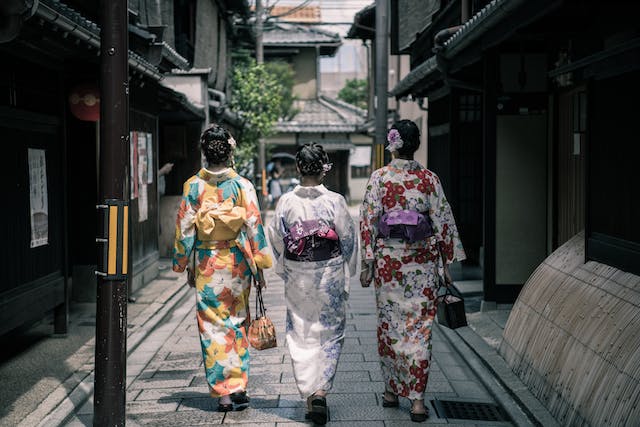
The Japanese fashion has immensely influenced the world with its powerful fusion of traditional elements with modern fashion trends. It includes people of difference cultures wearing kimono-inspired pieces or traditional Japanese fabrics incorporated somehow into the more contemporary designs.
The Japanese fashion scene is also known to be of experimental nature. Designers and enthusiasts often push boundaries and challenge conventional norms in style, color and coordinations.
One of the major reasons due to which Japanese street fashion has found its way across the world, is because influential figures, celebrities and social media influencers contributed to its evolution, with unique styles becoming popular among fashion-conscious individuals.
Samurai & Ninja History
Remember Samurai Jack? Of course you do! It was among those outstanding cartoon network shows that was our go-to and ones which we used to discuss among siblings and friends and whatnot.
Samurai and Ninja are the terms of historical significance in Japanese culture which are fascinating to many. The codes of honor, martial arts and mysterious practices of these warriors have a timeless allure.
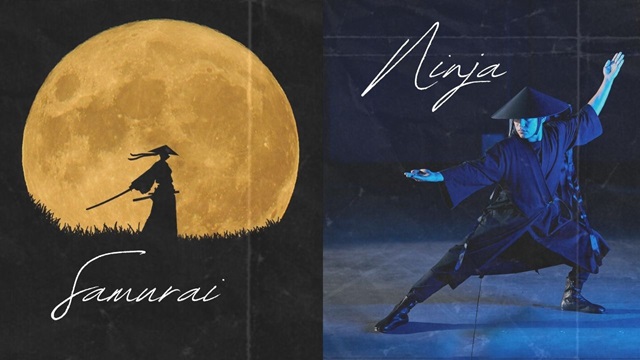
Samurai:
Samurai were basically a class of highly skilled and trained warriors in feudal Japan, known for their adherence to a strict code of conduct called Bushido. Bushido is a code emphasizing on principles such as loyalty, honor, discipline and self-sacrifice.
They were all skilled in various martial arts, particularly swordsmanship and were expected to uphold a strong sense of duty to their masters.
The iconic katana and armor are symbols that often come to mind when one thinks of the samurai.
Ninja:
Talking about the Ninjas, these were covert agents or mercenaries known for their espionage, infiltration and unconventional warfare tactics.
Ninjas were skilled in sabotage and guerrilla warfare, employing various specialized weapons and techniques.
Contrary to the popular image of black-clad assassins, historical ninjas were adaptable and highly resourceful, often working as spies utilizing disguises, stealth and subterfuge to accomplish their missions.
Beautiful Landscapes
Now that we talked about the culture, arts, martial arts and whatnot that influenced the world with the Japanese culture, how can we forget the most outstanding, eye-pleasing feature of the country: the beautiful landscapes. And this becomes another reason why is Japanese culture so popular.
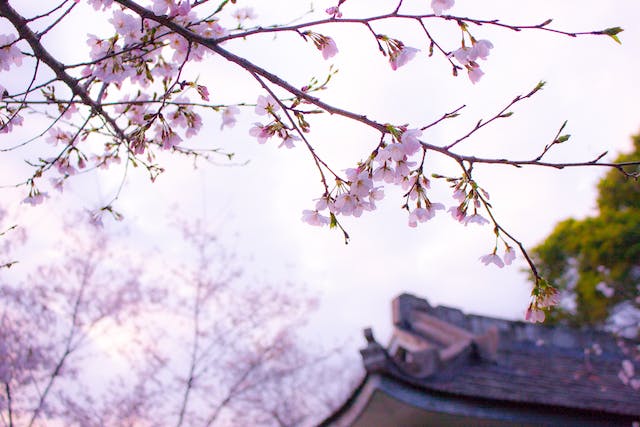
Japan boasts of stunning natural landscapes: from cherry blossoms in Spring to serene bamboo forests and picturesque mountains. The country is diverse geography and scenic beauty are major attractions for tourists.
Some of the most stunning topography in Japan that enchants visitors from across the globe are:
- Cherry Blossoms: The delicate pink and white flowers make for one of the best times to visit Japan. The cherry blossom season is the one where travelers experience the most beautiful Japanese landscapes.
- Majestic Mountains: Home to numerous majestic mountains, including Mt. Fuji, an iconic symbol of the country. They offer stunning vistas and hiking opportunities for nature lovers.
- Serene Bamboo Forests: The Arashiyama Bamboo Grove in Kyoto provide a serene and picturesque environment, creating a sense of peace and natural beauty.
- Enchanting Islands: Adorned with scenic beauty, the Japanese coastline has fascinating islands like Okinawa with their pristine beaches, turquoise waters & incredible marine life.
- Seasonal Changes: From the verdant greenery of summer to the vibrant colors of fall foliage (or koyo) to the peaceful winter snowscapes, Japan brings in its own distinct beauty in each season.
Conclusion
At the end, the multifaceted appeal that the Japanese culture, with its emphasis on respect, tradition, creativity and innovation, makes it a subject of enduring interest for people from around the world.
Whether it’s the timeless allure of samurai history and traditional arts or the fascinating landscapes and the pop-culture influence, Japan’s culture continues to captivate and inspire.
There you have it. Now you know why is Japanese culture so popular across the world.
Have you visited Japan? How was your experience? Share in the comments down below.
Share the blog with fellow travel lovers.
That’s All Folks!




